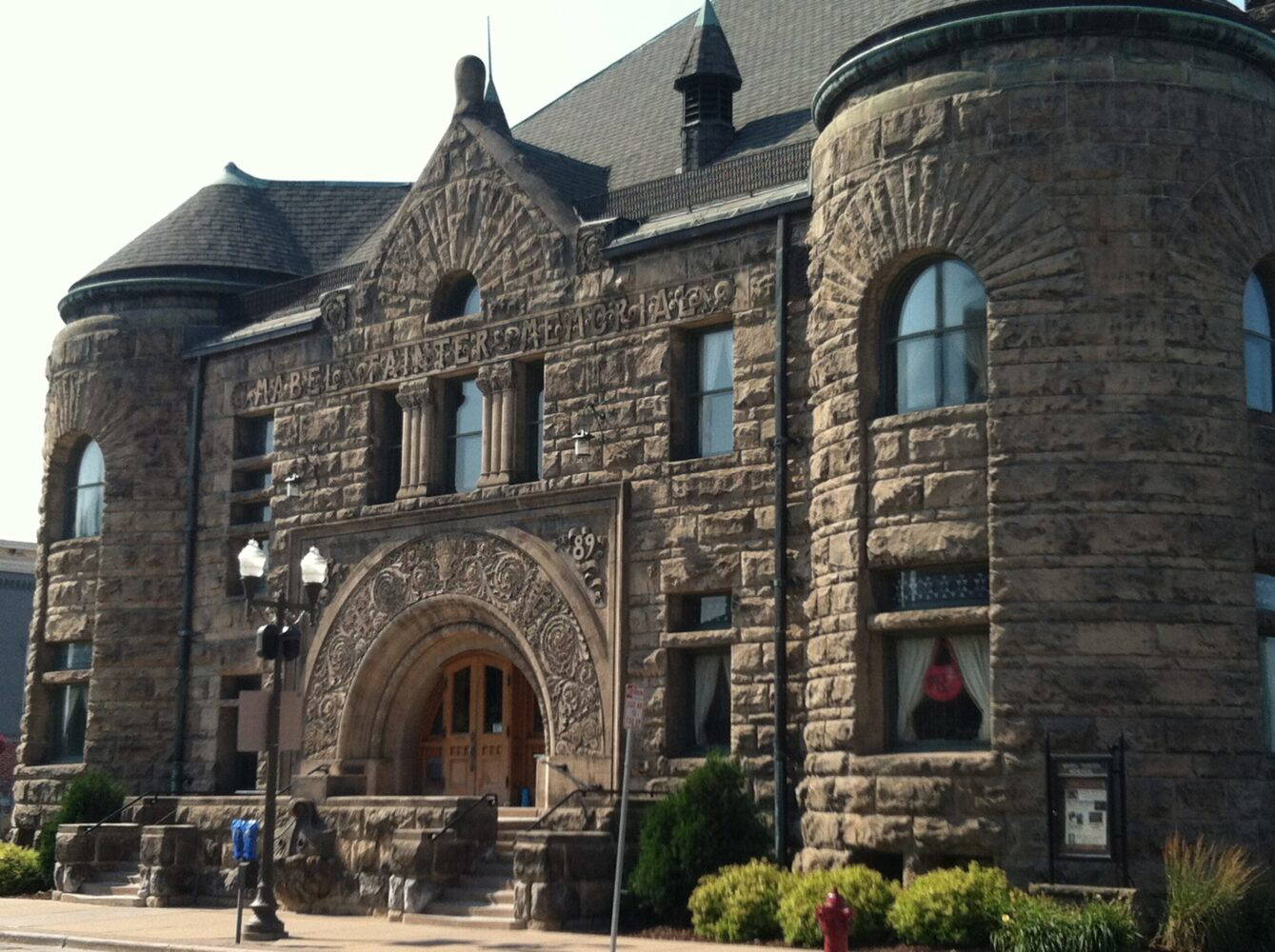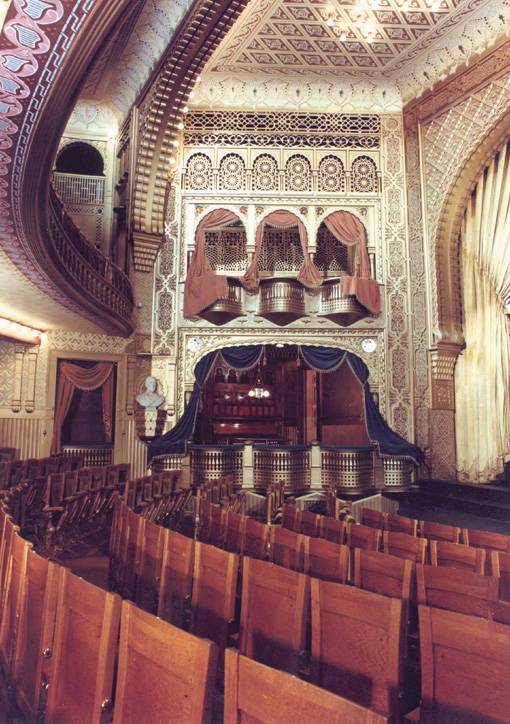Last month we held a poll in our newsletter in celebration of ARCHtober. Governor Tony Evers proclaimed October as “Architecture Awareness Month”. As a company that has served the architectural community since 1956, we wanted to participate by holding a poll with our clients to vote on Wisconsin’s Architectural Wonder. We received nearly 300 responses from our clients in our most recent newsletter.
1.) (Winner) Mabel Tainter Theater – 16.3% (48 votes)
2.) Wingspread – 10.5% (31)
3.) (Tie) Black Point Estate – 10.2% (30)
4.) (Tie) Taliesin – 10.2% (30)
5.) Milwaukee Art Museum – 9.9% ( 29)
6.) Harley Davidson Museum – 9.2% (27)
7.) (Tie) Wisconsin State Capitol – 8.8% (26)
8.) (Tie) The Octagon House – 8.8% (26)
9.) American Family Field – 8.2% (24)
10.) Monona Terrace – 7.8% (23)
The Mabel Tainter Theater, a jewel in the crown of our state’s architectural heritage, has emerged as the winner of our recent poll. Nestled in the picturesque northwoods, this theater embodies over a century of historical and cultural significance, highlighting the impact of architecture in our smaller communities. Often overshadowed by more prominent structures, the Mabel Tainter Theater nonetheless stands as a testament to enduring beauty and intricate design. For decades, it has not only been a beacon of artistic and theatrical expression but also a cherished landmark that celebrates the richness of our architectural legacy.We’d like to take a moment to reflect on the legacy of the theater’s impact on Wisconsin and the Menomonie community.
Honoring Mabel Tainter
 Commissioned by Captain and Mrs. Andrew Tainter, the Mabel Tainter Memorial Building was created as a tribute to their late daughter, Mabel, who had a deep love for music and the arts. No expense was spared in designing the building, which was constructed in the Richardsonian Romanesque. To this date, it is unclear who truly designed the treasured theater. For many years it was thought that Harvey Ellis designed it, but it was later discovered in the records from the National Register that it was most likely designed by Edgar E. Joraleman. Both were employed by the firm of L.S. Buffington in nearby Minneapolis, Minnesota.
Commissioned by Captain and Mrs. Andrew Tainter, the Mabel Tainter Memorial Building was created as a tribute to their late daughter, Mabel, who had a deep love for music and the arts. No expense was spared in designing the building, which was constructed in the Richardsonian Romanesque. To this date, it is unclear who truly designed the treasured theater. For many years it was thought that Harvey Ellis designed it, but it was later discovered in the records from the National Register that it was most likely designed by Edgar E. Joraleman. Both were employed by the firm of L.S. Buffington in nearby Minneapolis, Minnesota.
A Symbol of Community Engagement
Inspired by the vision of Reverend Henry Doty Maxson, a Unitarian minister, the Tainters decided to create a community center that would enrich the lives of the people of Menomonie. The building, situated in the heart of the business district, was intended to serve various purposes, including educational, charitable, social, and religious activities. Its purpose and grandeur were revealed to the public in December 1889, leaving the community excited and full of anticipation.
The Splendor of the Building
 The Mabel Tainter Memorial Building boasts an exquisite exterior constructed from Dunnville sandstone quarried along the Red Cedar River. Inside, visitors are greeted by hand-stenciled walls and ceilings, a majestic marble staircase, stained glass windows, and brass fixtures. The building also features a magnificent 313-seat theater and a reading room, which served as the home of the Unitarian Society of Menomonie and Menomonie’s public library.
The Mabel Tainter Memorial Building boasts an exquisite exterior constructed from Dunnville sandstone quarried along the Red Cedar River. Inside, visitors are greeted by hand-stenciled walls and ceilings, a majestic marble staircase, stained glass windows, and brass fixtures. The building also features a magnificent 313-seat theater and a reading room, which served as the home of the Unitarian Society of Menomonie and Menomonie’s public library.
Preservation and Restoration
Over the years, the Mabel Tainter Memorial Building has undergone several updates to ensure its preservation and adaptability. Recent renovations have enhanced accessibility and safety features, including a new entrance, public elevator, and a sprinkler system. These updates reflect the community’s commitment to safeguarding this historical gem without compromising its Victorian elegance.
Cultural Programming and Community Engagement
Today, the Mabel Tainter Center for the Arts, a tax-exempt nonprofit organization, owns and operates the building. It offers a diverse range of cultural programming, including performing arts and comedy series, an annual fine arts and crafts fair, and other artistic and educational events. The Menomonie Theater Guild also presents many of its captivating performances within the walls of this iconic building.
Understanding our Past to Inspire the Future
The Mabel Tainter Memorial Building stands as a proud symbol of Menomonie’s rich history, artistic legacy, and community engagement. It serves as a constant reminder of the Tainter family’s generosity and their desire to improve the lives of others through the power of art and culture. As visitors step into this architectural masterpiece, they are transported to a bygone era, where beauty, elegance, and creativity continue to shape our understanding of the past and inspire our present (and future).
Image Credits:
Header Image, Lost In Scotland, on Flicker
Last month we held a poll in our newsletter in celebration of ARCHtober. Governor Tony Evers proclaimed October as “Architecture Awareness Month”. As a company that has served the architectural community since 1956, we wanted to participate by holding a poll with our clients to vote on Wisconsin’s Architectural Wonder. We received nearly 300 responses from our clients in our most recent newsletter.
The results:
1.) (Winner) Mabel Tainter Theater – 16.3% (48 votes)
2.) Wingspread – 10.5% (31)
3.) (Tie) Black Point Estate – 10.2% (30)
4.) (Tie) Taliesin – 10.2% (30)
5.) Milwaukee Art Museum – 9.9% ( 29)
6.) Harley Davidson Museum – 9.2% (27)
7.) (Tie) Wisconsin State Capitol – 8.8% (26)
8.) (Tie) The Octagon House – 8.8% (26)
9.) American Family Field – 8.2% (24)
10.) Monona Terrace – 7.8% (23)
The Mabel Tainter Theater, a jewel in the crown of our state’s architectural heritage, has emerged as the winner of our recent poll. Nestled in the picturesque northwoods, this theater embodies over a century of historical and cultural significance, highlighting the impact of architecture in our smaller communities. Often overshadowed by more prominent structures, the Mabel Tainter Theater nonetheless stands as a testament to enduring beauty and intricate design. For decades, it has not only been a beacon of artistic and theatrical expression but also a cherished landmark that celebrates the richness of our architectural legacy.We’d like to take a moment to reflect on the legacy of the theater’s impact on Wisconsin and the Menomonie community.







